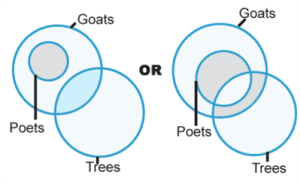CAT is one of the most competitive MBA entrance exams to get into the top management colleges in India like IIMS, IMTS, UPES, and other business schools. A student needs a well-rounded preparation strategy to crack the CAT exam. Being familiar with the pattern of the exam is an essential step in an effective preparation strategy.
CAT exam is divided into three sections. Namely,
- Verbal Ability and Reading Comprehension (VARC)
- Data Interpretation and Logical Reasoning (DILR)
- Quantitative Aptitude (QA)
Many students find the Quantitative Aptitude Section of the exam to be the most time-consuming and trickiest of the three sections in CAT. Especially, students from non-mathematical or non-engineering backgrounds find it difficult to do well in this section. In order to score well in Quantitative Aptitude, a student must have a strategy to crack the section.
A student’s score in Quantitative Aptitude in CAT has the ability to either increase or decrease the overall score. It constitutes over 30% of the CAT exam. Using proven tips and tricks by experts, a student like you can prepare for this section effectively.
Marking Scheme:
| Total Number of Questions | 26 |
| Marks awarded for the correct answer | +3 |
| Marks reduced for the incorrect answer | -1 |
| Total Marks | 78 |
| Difficulty Level | Moderate to Hard |
Syllabus:
- Probability
- Series and Sequence
- Modern Mathematics
- Permutations and Combinations
- Geometry
- Arithmetic-speed and distance
- Time and Work
- Ratios and Proportions
- Percentages
- Algebra
- Number System
- Profit and Loss
Major Topics Asked in this section:
- Quadrilaterals
- Factorials
- Conditional Probability
- Remainder Concepts
- Polygons
- Averages
- Infinite Geometric Progression
- Number System
- Statistics
- Harmonic Progression
- Properties of Ratio and Proportions
- Derangement
- Permutations
Tips to prepare for Quantitative Aptitude:
-
Focus on the Basics:
A common mistake many students do is learn only the shortcuts to solve a problem. Evidently, how do you solve a problem when you cannot understand it? That’s why, Such an approach will leave you with a huge score gap in the QA section. Before diving into the previous year questions, understand the underlying concepts of the topics.
-
Plan a Schedule:
It is best to only study at a fixed time. Studying polygons from a Quantitative Aptitude perspective from 7:00 AM to 10:00 AM, for instance. In this way, you will avoid overwhelming yourself by trying to manage learning a variety of topics for your CAT preparation. At last, outline the topics that you need to pay more attention to on a daily basis.
-
Learn Shortcuts:
In order to manage time effectively, you must learn the tricks and shortcuts to solve complicated problems. Here are some shortcut tips to consider:
- Be familiar with Vedic Maths
- Memorize the squares and cubes of numbers from 2 to 30 at least
- Learn Square roots of prime numbers at least till 29
- Learn specific tricks to solve repetitive question types
- Practice, Practice, Practice: Initially, start with easier questions topic-wise and then, consistently keep increasing the difficulty of your questions as you get better at them.
- Time your Mock Tests: Always remember that there is time limit to attempt each section of the CAT exam. As a result, time management plays an integral part in scoring well.






